What did Columbus, Nelson, and Darwin have in common? Apart from being great sailors, they all suffered from seasickness. An affliction haunting tourists and sea wolves alike, it can spoil the best memories at sea and jeopardize even the most illustrious naval career. And although we can now choose how to cross oceans, people of the 19th century had no such luxury – the rudimentary steamers of the age were the only option for explorers and travelers, many of whom spent the entire voyage bent over the railing. One such person was celebrated British inventor Sir Henry Bessemer, who, in true Victorian spirit, put his foot down and declared he would have none of that balderdash. The result of this resolution was one of the boldest and most unsuccessful vessels in modern history – the Bessemer Saloon Steamer.
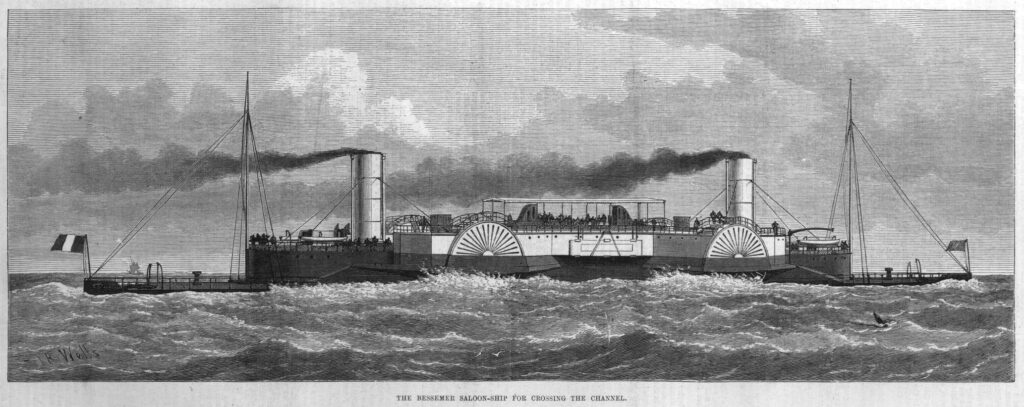
Your Reputation Precedes You, Sir!
A doyen of the Second Industrial Revolution, Bessemer had much in common with the hi-tech billionaires of today. Young Henry launched his career by revolutionizing the manufacturing process of bronze powder, the main and most expensive ingredient in gold paint. His novel steam-powered machinery lowered the cost several times, earning monumental profits for the inventor and financing a lifetime of creativity that produced more than a hundred important innovations.
In 1855, Bessemer patented a game-changing process for mass production of inexpensive steel, which etched his name in history and still has a dedicated chapter in most textbooks. And if anyone still doubted his business acumen, he co-founded the first commercial facility based on the technology, multiplying his fortune and spreading his reputation on a global scale. Riding the wave of a steampunk golden age, Bessemer was now unstoppable, churning out one invention after another, never lacking an audience for his latest contraption. Such was the case, when the great man declared war on seasickness and sat down to design the world’s most comfortable ship.
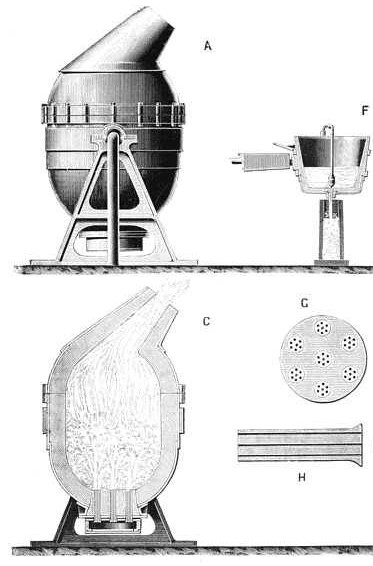
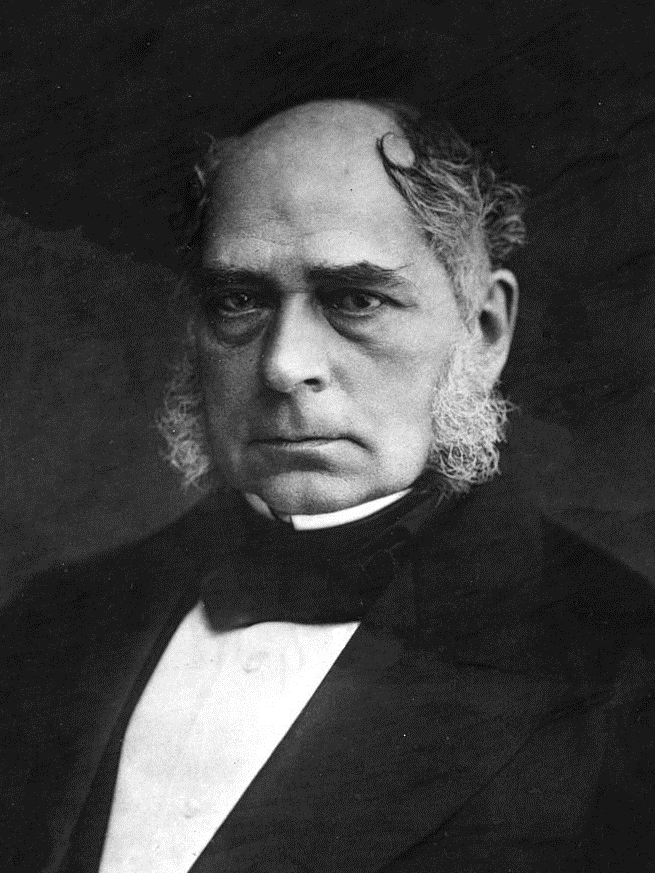
Visit The Shipyard Shop!
-
Titanic Party Invitation
Original price was: 10.00 $.5.00 $Current price is: 5.00 $. -
Titanic Trivia Quiz Download
Original price was: 10.00 $.5.00 $Current price is: 5.00 $. -
Editable Titanic 3rd Class Menu
Original price was: 10.00 $.5.00 $Current price is: 5.00 $. -
Editable Titanic 2nd Class Menu
Original price was: 10.00 $.5.00 $Current price is: 5.00 $.
A Gentleman’s Club on the Water
Following his sound business intuition, the inventor aimed at the top of the market, one might call it the Victorian equivalent of a Concorde. No one questioned the reasoning – ladies and gentlemen of means would love to pay a premium price to arrive spruce and cheerful at their destination. To eliminate the nauseating rolls and pitches, the steamer’s first-class compartment was mounted on gimbals, much like a gyroscope, keeping it level at all times, regardless of the movements of the rest of the ship. To Bessemer and his backers, the idea was as obvious as it was revolutionary, and he had no difficulty raising £250,000 in start-up capital.
Designed by celebrity naval architect Sir Edward James Reed, the SS Bessemer ended up 106.68 meters long, 19.81 meters wide at the beam, and with a draft of just 2.26 meters. Afraid she would turn out heavy with all the gizmos, Bessemer and Reed did not skimp on propulsion, fitting out the ship with two steam engines and enough boiler-capacity to supply the saloon’s elaborate hydraulics. Four identical paddle wheels propelled the double-ended hull, with two bridges at each end to compensate for limited maneuverability in the narrow English Channel. Bessemer and his investors agreed she would be perfect for the short stretch between Dover and Calais, as the shallow draft and oversized rudders made her unfit for the open ocean.

When it came to interiors, Sir Henry was as grand as with the rest of the steamer, creating a true floating gentleman’s club. Superb Moroccan leather covered the chair seats, carved oak caressed the eye with warm hues, and the painted wall-murals attracted more praise than the innovative technology below. And while passengers in second-class lounged in a more spartan environment, interiors throughout the ship reminded the beholder that this vessel was made for comfort.
A Choppy Ride
When the Bessemer hit the water in April 1875, it boasted the most recognizable silhouette in the English Channel – sleek, muscular, and symmetrical. The maiden voyage, however, was deemed a partial success, even by the most optimistic observers. The saloon remained unstable throughout the journey, which Bessemer and Reed blamed on the inexperienced operator of the hydraulic system and a faulty setting of the levers. Upon arrival in Calais, the steering system remained unresponsive at low speed, bumping the vessel’s side against the pier and damaging a paddle wheel. To the utmost delight of skeptics, she also crashed at Dover on the return leg.
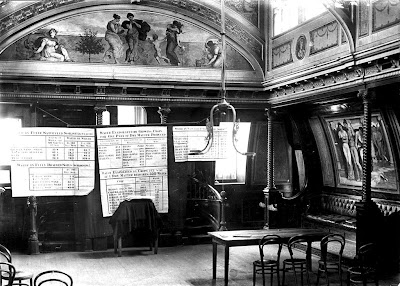
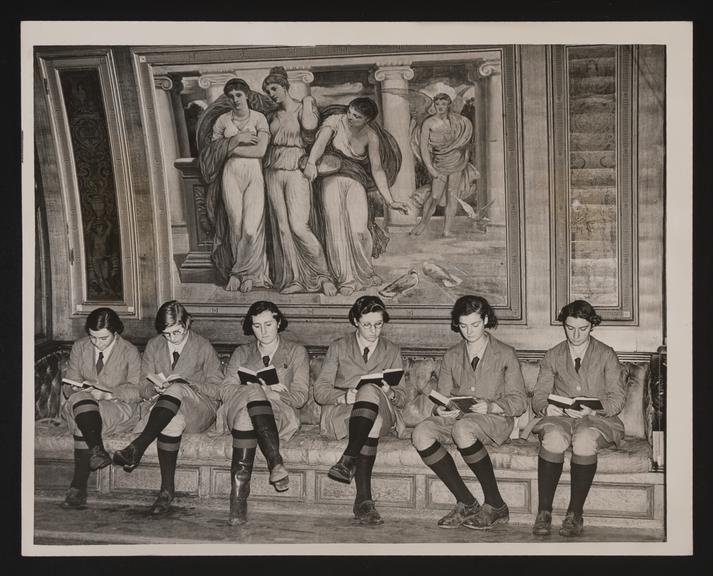
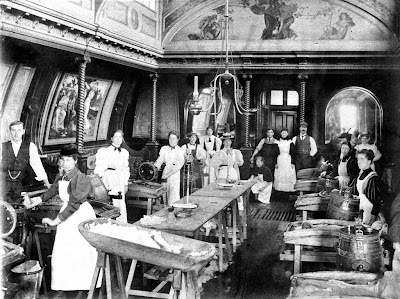
The Bessemer Saloon cabin in its retirement as a lecture room at the Swanley Horticultural College.
Soon after, the owners organized another voyage, this one attended by a larger audience and the media. To everyone’s disappointment, though, the Bessemer sailed with a locked saloon. Sir Henry claimed it was due to the damage sustained in the first trial, but many suspected that he and Reed had been unable to stabilize the structure and feared another fiasco. Whatever the reasons may have been, the contraption once again rammed into the peer at Calais, angering the authorities and whetting the appetite of the ravenous press.
In a third desperate attempt the following year, the steamer ran aground near Lincolnshire, and the adventure was over. With investors walking away and Sir Henry’s reputation somewhat chipped, the Bessemer Saloon Steamer ended at the scrapyard. Whether out of sentiment or dark humor, Edward Reed saved the saloon cabin from the shipbreakers, installing it at his stately home in Swanley as an extravagant billiard room. His house was later turned into the Swanley Horticultural College and the saloon used as a lecture room. And as with so many beautiful, glorious, or simply curious works of man, the last remnants of the Bessemer Saloon Steamer perished in the bombings of World War II.
Want to read about another curious vessel? Click here to discover Knapp’s Roller Boat!
The Shipyard

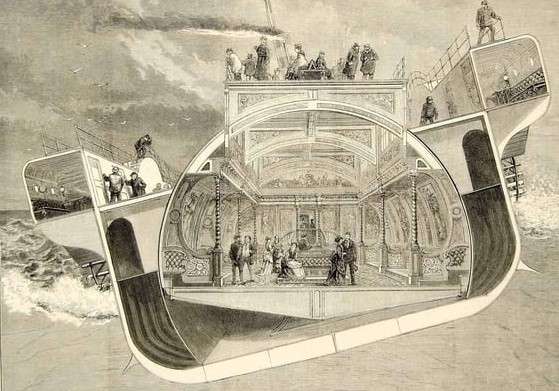




A very interesting and beautifully told story about one of the most remarkable inventors of the Industrial Revolution!
Thank you! So happy that you enjoyed it.